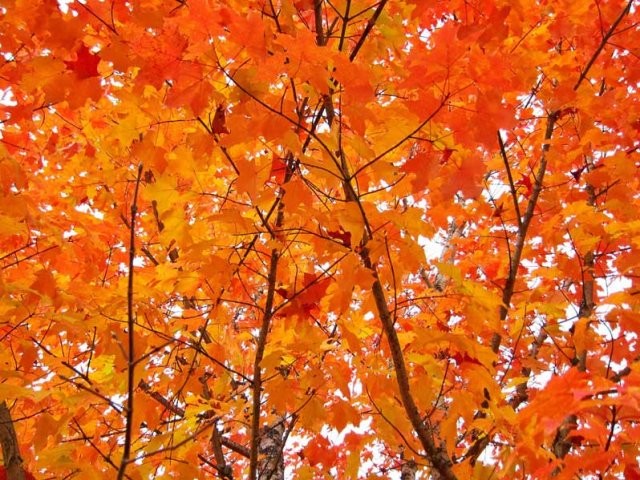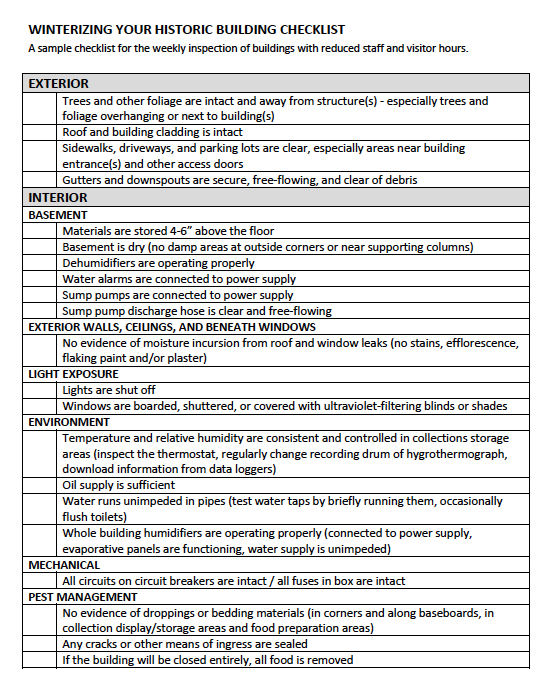
The MAS office will be closed for Christmas Holidays December 24th to January 4th.
Usual office hours will resume on January 5th, 2026

On March 12, we created a blog post entitled Spring Preparations for your Site. There, tips were provided on how to get your site ready for the impending effects of the spring melt. Now we will tell you how to do the opposite.
Ideally, preparing your site for winter (during the fall, as emphasized by our fall photo) is very similar to preparing your site for spring. The things you do now should last throughout the winter and into the spring (with a few check-ups along the way).
Water is one of the major concerns. To prevent water from damaging your collections, a few preventative measures should do the trick. Check over your building for trouble spots; areas where water or ice could get in or get backed up. Make sure that your eavestrough is unclogged from the debris of fall. Pack up water sensitive objects into clear, colourless containers that will protect them. Raise or pack up objects that are on the floor. If there are known areas of leaks, move objects away from that area and/or place a tarp or plastic sheeting over objects.
Check with your insurance provider as to how often you need to inspect the building for trouble. Coordinate with the local police or fire department to watch for issues regarding the museum, whether that be crime or weather related issues. Shutter the window (if you can) to prevent not only light and weather related effects from getting in but also potential intruders.
Inspect the area around the musuem. How are those tree branches looking? Do you need to put up a snow fence?
Check for rodent entry points. Can you remedy the situation?

Is the museum building heated all year long? If you do not have heat during the winter and have turned off the water, be sure to drain the water in the toilets and pipes as well as the hot water heater. If you are leaving the water on, ensure that it does not freeze. If you use your museum for events in the winter after the heat has been turned off, do a gradual warm-up; this ensures that drastic changes in the temperature (as well as humidity) of the building is avoided. Don’t feel sad that your building is not heated; it won’t necessarily damage your collections! What does damage your collections is dramatic changes in the temperature and humidity. Knowing what is in your collection and understanding how they react to changes is critical. Art in the museum is probably the most sensitive items that you have; oil and acrylic paintings may crack at low temperatures. If you store objects properly, their enclosures will buffer temperature and humidty which act directly upon them.
Documentation is key! Document damage to your buidling to keep and eye on whether it is getting worse. Relying on memory alone can be tricky! Ensure that the person (or persons) who care for the building during the winter are aware of these problem areas. Have assigned tasks and communicate to each other who is doing what. Does it include snow removal? What is the chain of command if an emergency arises? Create checklists and contact lists for everyone to view and place it in the central location.
——————————————————————————————————
Sources of information:
Conservation Centre for Art and Historic Artifacts. Winterizing Your Historic Building. nd.
Peever, Mary. Closing a Museum for the Winter. Ottawa: Canadian Conservation Institute: 1988.
Province of Manitoba, Historic Resources Branch. Heritage Building Maintenance Manual. nd.

Usual office hours will resume on January 5th, 2026

Just a reminder that the Final Report for the Museum Improvement Micro Grant for Community Museums is due December 5th! Your final report will require you to provide a brief

Thursday October 16, 202512:00pm CSTOnline via Zoom: https://us02web.zoom.us/j/86760471705?pwd=XjoSlWAP0TJZVYrprylmLqujOkVrk2.1 No registration required. The Museum Grant Program (MGP) provides operational funding to help foster strong, vibrant, community-based Saskatchewan museums that are valued